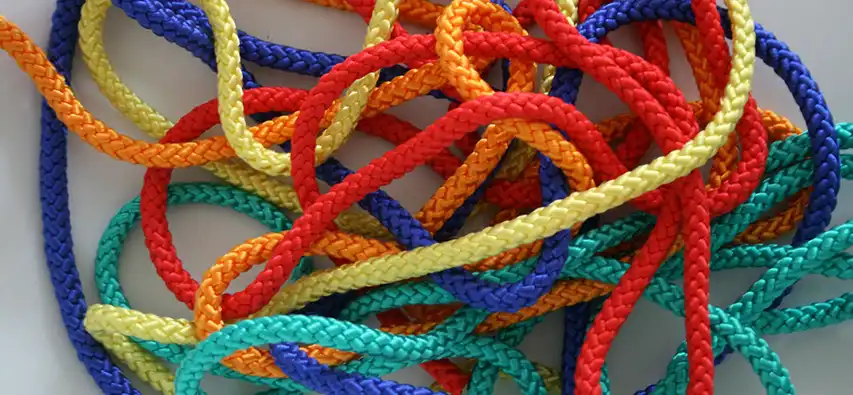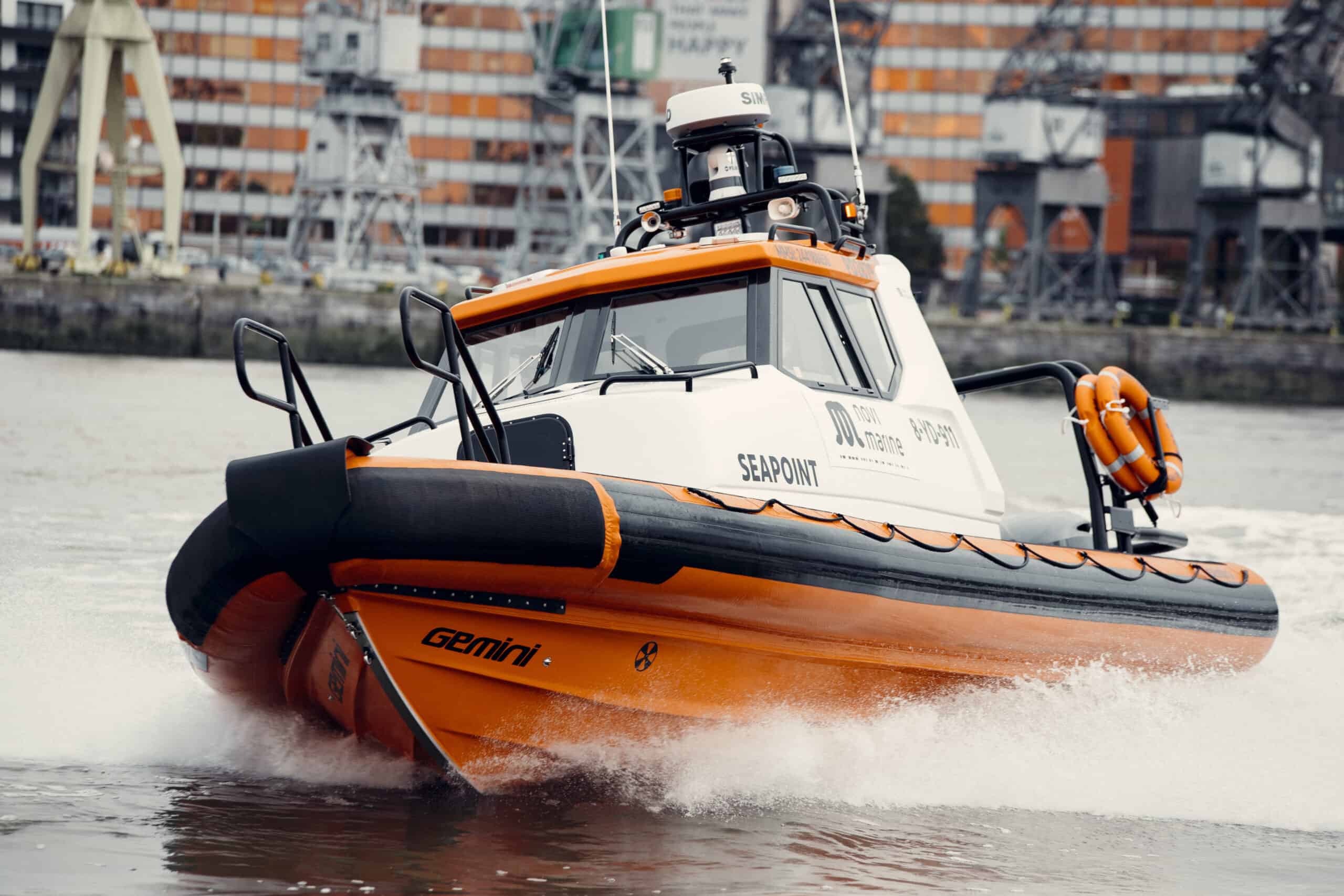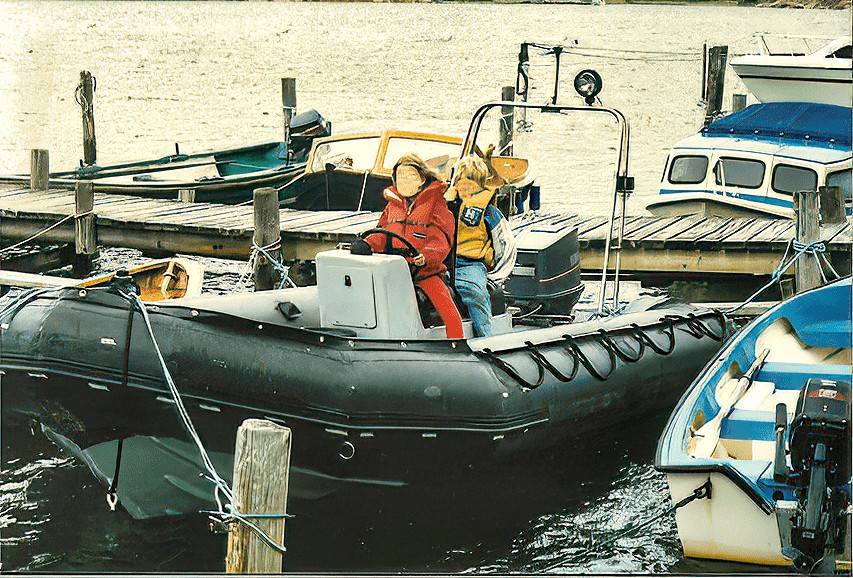
Table of Contents
Introduction
As a skipper, crew member or just a sailor, you simply can’t ignore the importance of tying a knot.
Just as every boat owner must learn how to dock a boat and anchoring a boat, I can say that knot tying is an essential skill that comes in handy while saving lives, moving cargo, mooring, securing loads and in so many other situations. I use these knots all the time on the water.
I know that boating knots is not a skill that many boaters are familiar with as they begin and I can’t blame them. Who’s telling them what to know about knots when buying a RIB (or any motorboat).
There are many marine knots, hundreds, each with a dedicated function, although others are versatile enough to be used in more than one situation.
When I mastered a few of these essential knots, it’s all you need to make your sailing not just safer but also more accessible.
Remember, it’s always best to putter before you hit the waters. Mastering these four basic marine knots will prove indispensable for every mooring, anchoring, voyage and every boat owner or crew member should be aware of.
I added some videos to visualise the tying of the knots. Here we go!
1. Bowline Knot
Among all the knots, the bowline is the most popular and the most coveted of all nautical world. The name Bowline hail from “boh-line”.
The bowline normally is used to fasten and tighten the halyard to the head of the sail. When a loop is created at the end of the line, a bowline becomes useful when one needs to fasten a mooring to a ring, a post or other places.
Bowlines have been used for over many centuries now and it’s a very versatile knot.
One of the greatest advantages the bowline has over other knots is that is very secure, barely shifts, which doesn’t reduce the strength of the rope which is tied and it’s very easy to loosen even under a tight grip when a high tension occurs.
When it’s under a load, the bowline doesn’t slip or bind. Also, two bowlines can be interlinked and join two ropes.
The only shortcoming with the bowline is when a load is on the standing end, it cannot be tied or untied. So just avoid it when a mooring line may be released while under a load.
If you want to make a bowline well, follow these three steps:
1. You should make a small loop just a few feet from the end, then make sure you pass the end of the line up through the loop you created a while ago.
2. Just above the loop, do wrap the end around the mainline, then bring the rope end back down into the loop, and then thread it back down inside the fixed loop. Remember the size of the fixed loop in a complete bowline; it’s determined by the size of the rope which remains below the loop.
3. To tighten the knot, tug hard the mainline and the end away from the loop that was created and snug the knot down
2. Clove Hitch Knot
In our list we have the clove knot, which is as important as the bowline knot.
The clove hitch knot is normally used as a temporary measure when you want to secure your vessel temporarily somewhere. Basically, there is a pole or a stanchion. This kind of a knot it’s adjustable at your convenience.
If you have a line that is either too short or its too long, it can be fixed without so much trouble. It’s a popular skill used in hanging the fenders at the dock.
Even though it has it has its advantages it has also its shortcomings, such as being slip when under high tension. Just for safety purposes, make extra turns just before you decide to pass the line through itself, or you can just pass a half hitch over the end while a load is on which will in turn prevent it from loosening.
How to make a Clove Hitch Knot in two steps.
1. The very first step is to wrap the line just one time around that rope or rail.
2. Then the second step is to start wrapping the rope again the second time, however, with the line crossing on top of the first wrap. You should go ahead and finish the second wrap, but just before you tug it tight, slide the working end underneath, and make sure now you pull to make certain the clove hitch is in place.
Always remember that when this line isn’t under any pressure, or if it’s in a position to rotate on the pole it can be easily undone. This is not the best knot when you’re securing your boat to a dock. If you must use it just add a half hitch knot at the top of clove hitch.
3. Cleat Hitch knot (Dock Line)
Cleat hitch knots are not only essential to any boater out there, but there a “must-know”.
It’s an amazingly simple knot to learn but requires practice just like any other.
Suppose you’re pulling to the fuel dock just temporarily or just cleating off an anchor line you need to use the cleat hitch to secure the rope to the cleat in a proper manner.
You cannot use another hitch, bend nor a knot when securing a line from a boat to a dock making it a must know skill.
When you get some spare time while at the deck, dock or on the boat have some time to practice the cleat hitch knot with these four steps below:
1. You should take the line and wrap it on one side of the base of a cleat under the ends on both sides.
2. Have the line pulled across the top of the cleat and then twist it under the horn on the other side, making a figure eight around one side of the horn.
3. Now, do the same thing as step two but reverse the direction.
4 Now to finish off the cleat hitch, do pass the working end under the opposite horn again, then tug to tighten.
4. Two Half Hitches
This is one of the simplest knots one can master really quickly. It’s just straightforward, one-half hitch and another half hitch.
If you’re looking to tie a line tightly around any object, then this is the knot to go for. It’s usually used to secure light duty load and can also be combined with a round turn to secure a dock line to the piling.
Two half hitches can also be used on a clove hitch to secure a fender whip, stopping it against a slip.
Three Steps to make a Tow Half Hitches:
1. Just wrap the rope onto the preferred object twice
2. Take the working end and run it behind the standing end, then pull to create a half hitch
3. Just do a repletion of the step and create a second-half hitch.
Probably your wondering why not use a single half hitch? Well that’s an overhand knot that has been tied on a rope and got wrapped around an object, and it’s rarely or ever used on its own. It’s not secure, and it’s weak on its own, however with two half hitches, then it becomes a stronger knot.
Here’s the video.
5. Figure Eight Knot
Probably you have heard of the figure-eight knot though under a different context, perhaps being referred as stopper knot or figure-eight bend or Flemish bend.
It’s one of the most essential boat knots that you can’t fail to learn.
It’s usually preferred by boaters because it’s easy to undo, safe and also binds two ropes together. It doesn’t matter the amount of strain that’s put on it this stopper knot doesn’t bind and it’s the kind of a knot that is generally used when stopping a line from running.
It’s also often used to reinforce another knot and prevents a rope from slipping through a pulley.
Climbers also rely on this knot. In my climbing days I used this knot to fix the rope onto my climbing harness.
To make a figure-eight, you should follow these three steps:
1. Just create a loop on one end of the rope
2. Then, take the working end of the rope and pass it through the loop.
3. Hold both sides of the rope and pull, tightening the knot as a result.
Here’s the video.
Bonus knot: Sheet Bend (Double Sheet Bend)
Sheet bend, which is also referred to as becket bend or weaver’s knot, is one of the most popular knot used by sailors.
It’s made to join two ropes of different sizes and has some diameter difference which is not too great. Sheet bend are very secure and there easy to untie.
Here are the four steps of making a sheet bend knot (double sheet bend):
1. You should start crating a loop on one end of the rope as the first step
2. Hold the second rope working end and on the underside of the initial rope bight pass it through.
3. Now take the working end of the second rope and pass it just around the first rope.
4. The final step should be running the working end back under the second line then tightening by pulling each side of the standing line.
Other important knots you should consider learning include the reef knot, rolling hitch, anchor Bend, sailor’s coil, rolling hitch, reef knot, among others.
How to master these knots? Practice, practise, practise.
All videos were published on YouTube.



